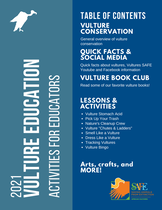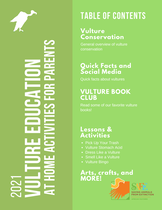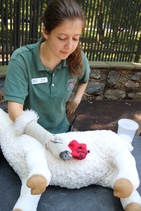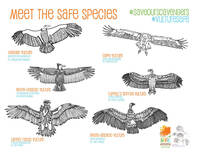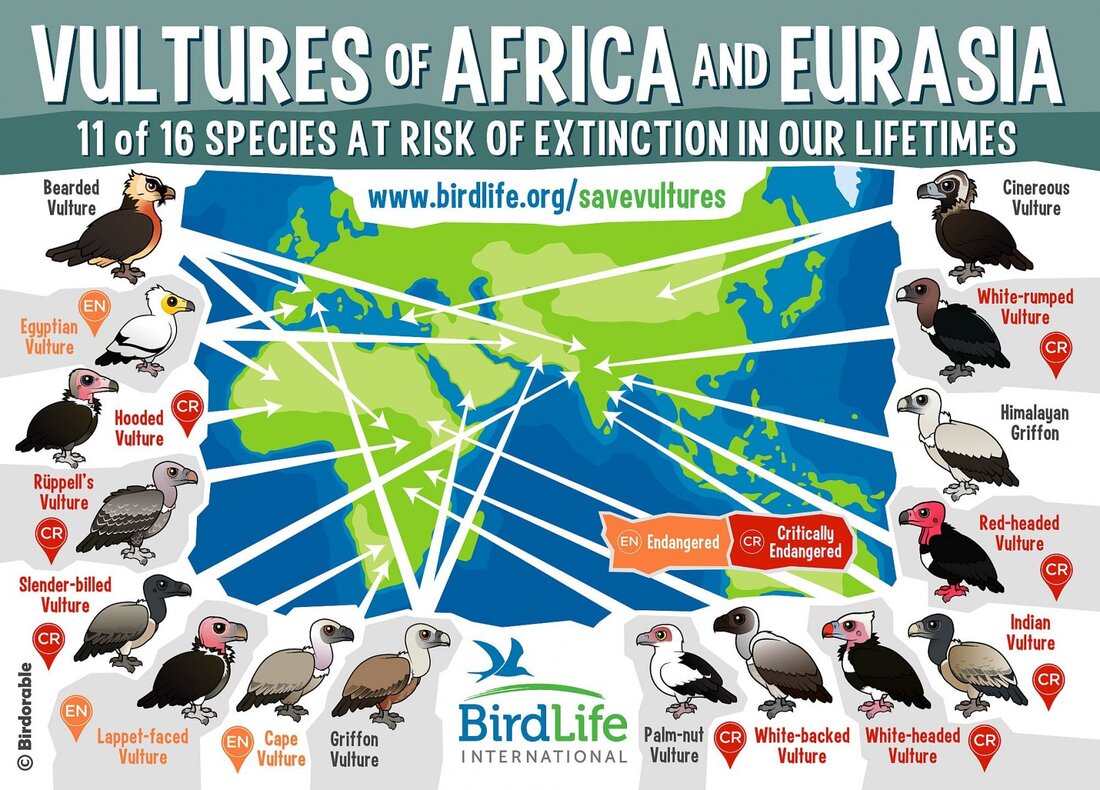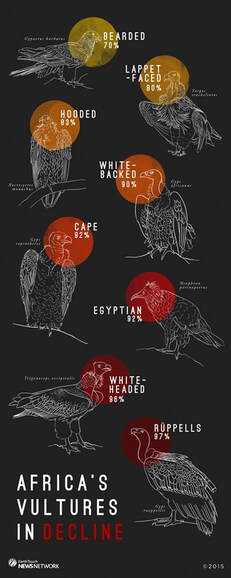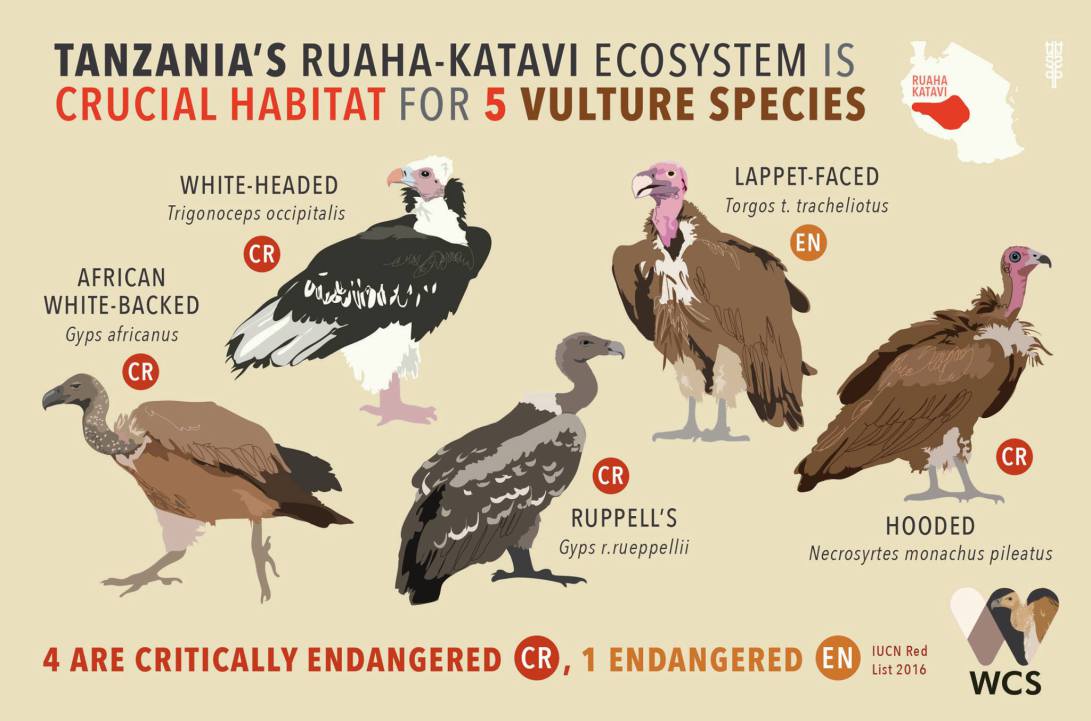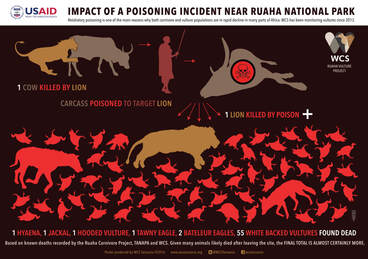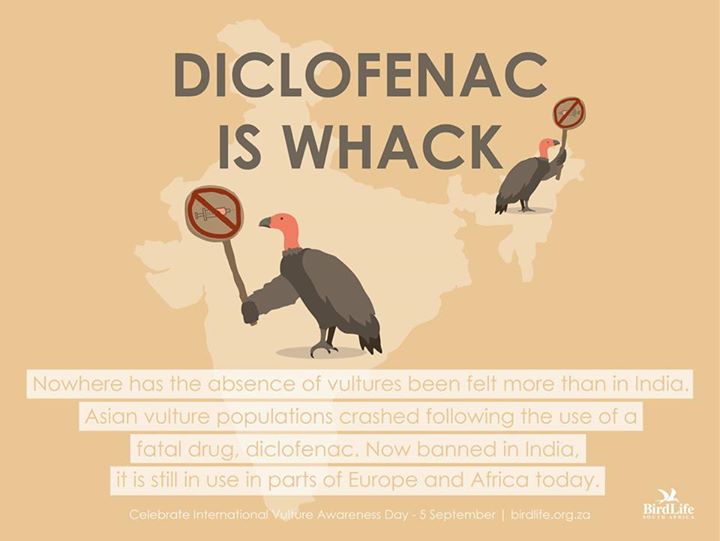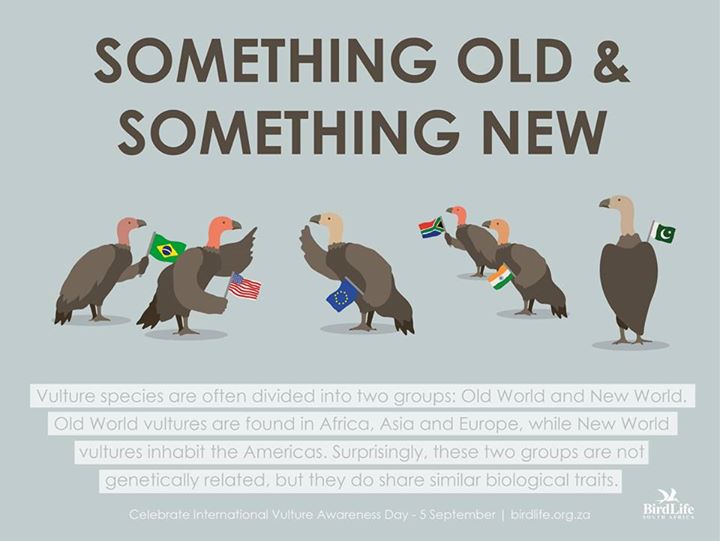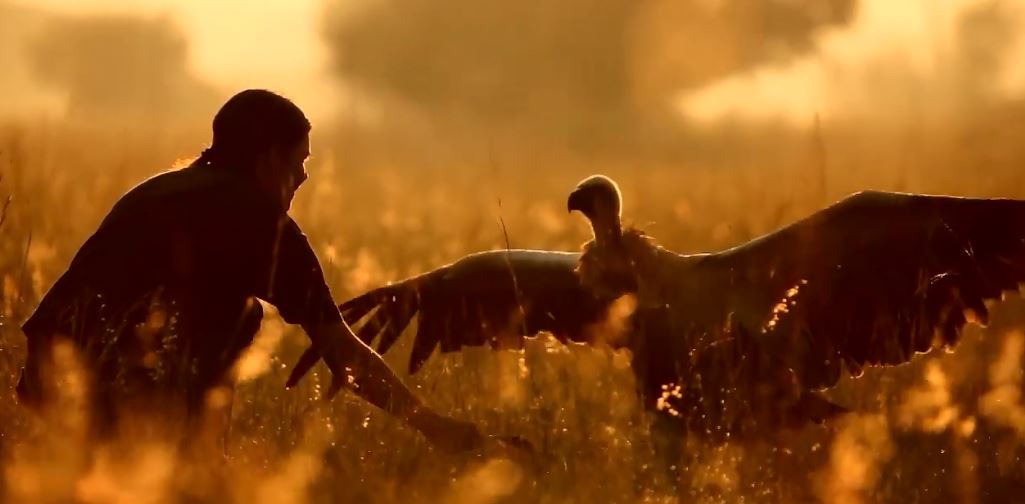International Vulture Awareness Day is coordinated through VultureDay.org
|
VULTURES ARE IN TROUBLE
Vulture populations around the world are declining, with 16 of 23 species (or 70%) listed as Threatened, Endangered, or Critically Endangered.
They are the most imperiled group of birds in the world. 12 of 16 Old World Vultures are listed as Endangered or Critically Endangered, with more than 80% of species declining.
|
Vulture Education Toolkit
|
Looking for Vulture Education Resources? Check back soon to download our activity toolkit which includes plans or a fun coloring condor banner or coloring page.
|
Visit our Downloads page for activity resources such as coloring pages, bingo sheets, and more.
|
|
|
|
|
Vulture Crisis Overview
Check out these resources prepared by BirdLife International
|
|
AFRICAN VULTURE CRISIS
7 of Africa’s vultures are threatened with extinction due to poaching, poisoning, collisions with power infrastructure, and habitat loss. The fate of vultures is directly tied to that of many other key African species, like elephants and lions.
Vultures around the world are either threatened or endangered due to human impacts on the environment. The most pressing threats facing vultures are: poisoning, habitat loss, collisions with energy infrastructures and lack of food availability. These impacts are causing global vulture populations to rapidly decline.
|
|
ASIAN VULTURE CRISIS
5 of Asia's vultures are Endangered or Critically Endangered: Oriental White-backed, the Long-billed, the Slender-billed, the Red-headed, and the Egyptian Vultures. The main culprit here is a veterinary anti-inflammatory drug called Diclofenac that was poisonous to vultures. This drug was used for cattle, where traditions in the Indian subcontinent left beef carcasses for vultures to scavenge on due to Hindu customs of only using cow's milk but not consuming the meat.
|
|
NEW WORLD VULTURES
California Condors populations crashed due to shooting, egg collecting, collisions with power lines, secondary poisoning and especially lead poisoning. They are still one of the rarest birds in the world.
Declining populations of Andean Condors in South America have left them listed as Endangered in Colombia, Venezuela, and Ecuador and Vulnerable across many other countries in South America. This species is persecuted by livestock farmers who worry about their lambs and calves and by seabird guano workers attempting to keep condors from scavenging on chicks. They are captured for traditional rituals, collide with power lines, and are losing food sources to habitat loss and competition with feral dogs.
|
international vulture awareness day
|
The first Saturday in September each year is International Vulture Awareness Day.
|
Vultures are an ecologically vital group of birds that face a range of threats in many areas that they occur. Populations of many species are under pressure and some species are facing extinction. |
Video resources
Why I love Vultures.
|
|
Munir Virani
Raptor biologist, wildlife photographer Munir Virani is a raptor biologist and wildlife photographer, and Director of the Peregrine Fund Africa Program, devoted to conserving birds of prey. As natural garbage collectors, vultures are vital to our ecosystem — so why all the bad press? Why are so many in danger of extinction? Raptor biologist Munir Virani says we need to pay more attention to these unique and misunderstood creatures, to change our perception and save the vultures. More from TED.com
|
The fight To Save South Africa's VulturesVultures are extremely important members of an ecosystem. These magnificent raptors fly in from huge distances to pick rotting carcasses clean thereby helping to control disease outbreaks. Many vulture species are now only abundant within protected nature reserves and these characteristic sightings are becoming more and more of a luxury. If the poaching and poisoning of vultures for body parts continues, there could very well be no nesting pairs left by 2020… |
|
|
|
Quarters for Conservation at Zoo Atlanta |
Vulture News - The Journal of the IUCN Vulture Specialist Group
Vulture News is the journal of the IUCN Vulture Specialist Group. It was originally the journal of the Vulture Study Group, which was formed in 1973 in southern Africa. The journal has been published since 1979 and is a venue for research, news, information and reports on vultures in all parts of the word where they occur. Contributions from ornithologists, research biologists, bird watchers, conservationists and any other interested people are encouraged. Single (or a series of) interesting pictures with extended captions are also encouraged. Refer to contributor information for more details. http://www.iucn-vulturenews.org/
Vulture News is the journal of the IUCN Vulture Specialist Group. It was originally the journal of the Vulture Study Group, which was formed in 1973 in southern Africa. The journal has been published since 1979 and is a venue for research, news, information and reports on vultures in all parts of the word where they occur. Contributions from ornithologists, research biologists, bird watchers, conservationists and any other interested people are encouraged. Single (or a series of) interesting pictures with extended captions are also encouraged. Refer to contributor information for more details. http://www.iucn-vulturenews.org/
List of Vulture Species, categorized by New World and Old World, as well as conservation status.
Types of Vultures and Vulture Species List: A-Z List of Vulture and Condor Species
BY MELISSA MAYNTZ (04/04/17)
Types of Vultures and Vulture Species List: A-Z List of Vulture and Condor Species
BY MELISSA MAYNTZ (04/04/17)

